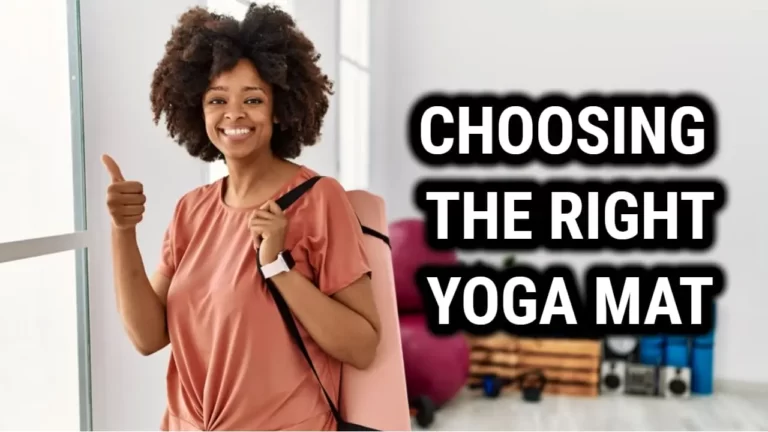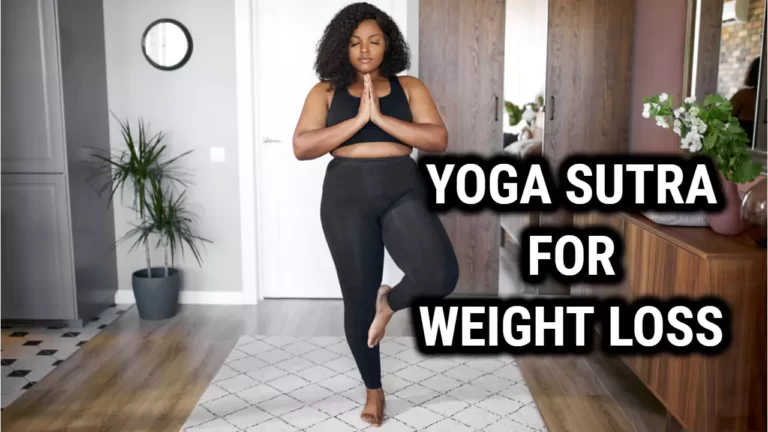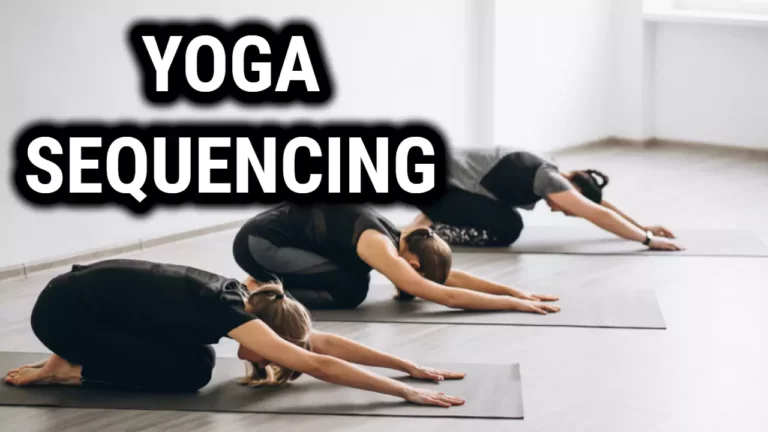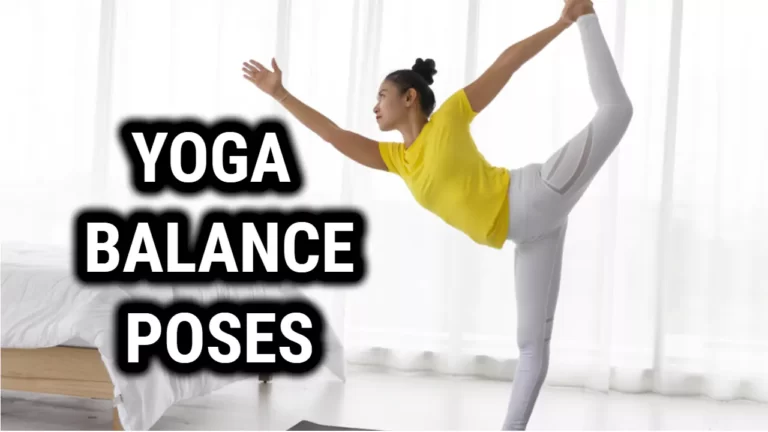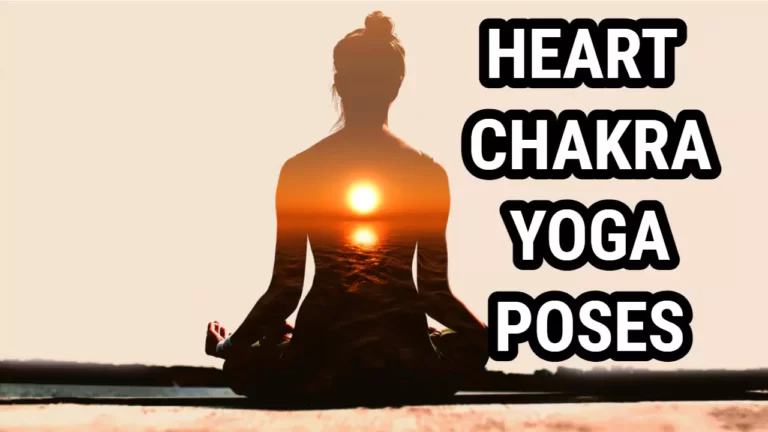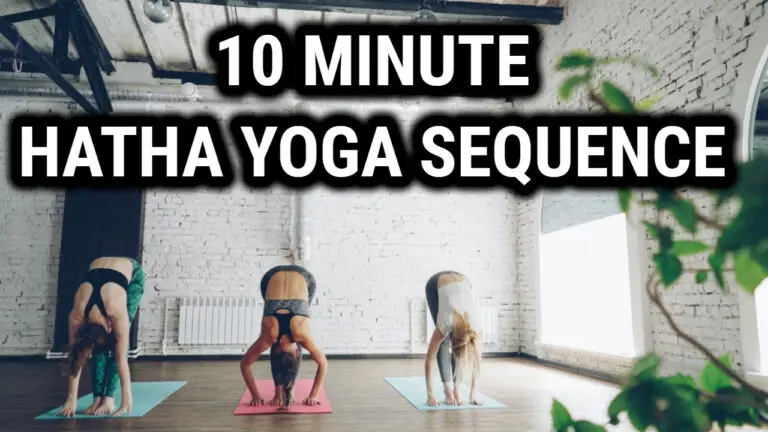How to Effectively Practice Vinyasa Yoga: Tips and Techniques

Vinyasa yoga is a popular style of yoga that emphasizes movement and breath. It is a flowing, dynamic practice that can be both physically and mentally challenging. In vinyasa yoga, each movement is synchronized with a breath, allowing practitioners to move through a sequence of poses in a fluid, seamless way.
While vinyasa yoga can be a great way to build strength, flexibility, and cardiovascular endurance, it’s important to practice it effectively in order to avoid injury and get the most out of your practice. This means paying attention to proper alignment, using modifications as needed, and listening to your body’s signals.
In this article, we will explore some tips and techniques for practicing vinyasa yoga effectively. Whether you’re new to the practice or a seasoned practitioner, these strategies can help you deepen your practice and enjoy all the benefits that vinyasa yoga has to offer.
Understanding Vinyasa Yoga

Vinyasa yoga is a popular style of yoga that emphasizes the synchronization of breath with movement. The word “vinyasa” comes from the Sanskrit term “nyasa,” which means “to place,” and “vi,” which means “in a special way.” In vinyasa yoga, the breath is used as a guide to flow from one pose to another in a continuous sequence.
The practice of vinyasa yoga involves a series of poses that flow together smoothly, creating a dynamic and fluid movement. Each pose is linked to an inhale or an exhale, creating a rhythmic and meditative practice. The pace of vinyasa yoga can vary, from slow and gentle to fast and vigorous, depending on the teacher and the class.
Vinyasa yoga is known for its physical benefits, including building strength, increasing flexibility, and improving cardiovascular health. It also has mental and emotional benefits, such as reducing stress and anxiety and promoting mindfulness and relaxation.
Preparing for Vinyasa Yoga
Before starting a Vinyasa Yoga practice, it is essential to prepare your body and mind. Here are some tips to help you prepare effectively:
- Stay hydrated: Drink plenty of water before and after your practice to keep your body hydrated.
- Eat light: Avoid eating a heavy meal at least two hours before your practice. A light snack like a banana or a handful of nuts can provide energy without weighing you down.
- Dress appropriately: Wear comfortable, breathable clothing that allows you to move freely. Avoid wearing anything too tight or restrictive.
- Arrive early: Arrive at the studio or your practice space at least 10-15 minutes before the start of class. This will give you time to set up your mat and get settled.
- Communicate with your instructor: Let your instructor know if you have any injuries or medical conditions that may affect your practice. They can offer modifications or adjustments to help you practice safely.
It is also important to set an intention for your practice. This can be as simple as focusing on your breath or setting a specific goal for your practice. By setting an intention, you can stay focused and present throughout your practice.
Remember, Vinyasa Yoga is a dynamic practice that requires strength, flexibility, and balance. By preparing your body and mind, you can practice safely and effectively.
Basic Vinyasa Yoga Poses

Vinyasa yoga is a dynamic practice that involves a sequence of poses that flow together. Here are some basic poses that are commonly included in a Vinyasa yoga practice:
| Poses | Description |
|---|---|
| Mountain Pose (Tadasana) | A standing pose that involves grounding your feet into the mat, lifting your arms, and lengthening your spine. |
| Downward-Facing Dog (Adho Mukha Svanasana) | A pose that stretches the hamstrings, calves, and spine while strengthening the arms and shoulders. |
| Plank Pose (Phalakasana) | A pose that strengthens the core, arms, and wrists while preparing the body for more challenging poses. |
| Chaturanga Dandasana | A pose that involves lowering your body from plank position to the floor while keeping your elbows close to your sides. |
| Cobra Pose (Bhujangasana) | A pose that strengthens the back muscles and opens up the chest and shoulders. |
| Warrior I (Virabhadrasana I) | A standing pose that strengthens the legs and core, while opening up the hips and chest. |
| Warrior II (Virabhadrasana II) | A standing pose that strengthens the legs and core, while stretching the hips and opening up the chest and shoulders. |
| Triangle Pose (Trikonasana) | A pose that stretches the hamstrings, hips, and spine, while strengthening the legs and core. |
These poses are just a few examples of the many poses that can be included in a Vinyasa yoga practice. It’s important to remember that Vinyasa yoga is a dynamic practice, so the sequence of poses can vary from class to class and teacher to teacher. As you progress in your practice, you may also explore more challenging poses and variations of these basic poses.
Breathing Techniques in Vinyasa Yoga
Vinyasa Yoga is a dynamic practice that involves synchronizing breath with movement. Breathing techniques play a vital role in Vinyasa Yoga, as they help to enhance the flow of energy and oxygen throughout the body. Here are some effective breathing techniques that you can use to enhance your Vinyasa Yoga practice:
- Ujjayi Breathing: This is also known as the “ocean breath” and involves breathing in and out through the nose while constricting the back of the throat. This creates a hissing sound and helps to deepen the breath and calm the mind.
- Kapalabhati Breathing: This is also known as the “skull shining breath” and involves rapid, forceful exhalations through the nose while keeping the inhalations passive. This technique helps to purify the body and energize the mind.
- Nadi Shodhana Breathing: This is also known as “alternate nostril breathing” and involves breathing in and out through alternate nostrils while using the fingers to close one nostril at a time. This technique helps to balance the energy channels in the body and calm the mind.
It’s important to remember to breathe deeply and evenly throughout your Vinyasa Yoga practice. This helps to increase oxygen flow to the muscles and organs, reducing tension and promoting relaxation. Additionally, focusing on your breath can help to quiet the mind and improve mental clarity.
By incorporating these breathing techniques into your Vinyasa Yoga practice, you can enhance your overall experience and reap the benefits of this dynamic and energizing practice.
Also Read: Easy-To-Follow Basic Yoga Poses – Perfect For Anyone
How to Do Vinyasa Yoga Effectively
Vinyasa yoga is a dynamic style of yoga that involves a series of flowing movements that are synchronized with your breath. Here are some tips on how to do Vinyasa yoga effectively:
- Focus on your breath: In Vinyasa yoga, each movement is synchronized with a breath. The breath is given primacy, acting as an anchor as you move from one pose to the next. So, it is important to focus on your breath and use it to guide your movements.
- Start slowly: If you are new to Vinyasa yoga, start with a slow-paced class to get used to the movements and the flow. As you become more comfortable, you can gradually increase the pace and intensity of your practice.
- Listen to your body: It is important to listen to your body and not push yourself too hard. If a pose feels uncomfortable or painful, back off and modify the pose or take a break. Remember, yoga is not a competition.
- Engage your core: Engaging your core muscles is key to maintaining stability and balance in Vinyasa yoga. So, focus on engaging your core muscles throughout your practice.
- Use props: Props such as blocks, straps, and blankets can be very useful in Vinyasa yoga. They can help you modify poses, deepen stretches, and provide support where you need it.
- Stay hydrated: Vinyasa yoga can be a sweaty practice, so it is important to stay hydrated. Drink plenty of water before, during, and after your practice.
By following these tips, you can do Vinyasa yoga effectively and safely. Remember to always listen to your body and practice with mindfulness and intention.
Benefits of Vinyasa Yoga
Vinyasa yoga is a popular style of yoga that focuses on the synchronization of breath with movement. This flowing practice offers numerous benefits for both the mind and body. Here are some of the top benefits of practicing Vinyasa yoga:
- Improves Flexibility: Vinyasa yoga involves a lot of movement and stretching, which can help increase flexibility and range of motion in the body.
- Strengthens Muscles: The constant movement and transitions in Vinyasa yoga require a lot of strength and endurance, which can help tone and strengthen muscles throughout the body.
- Boosts Cardiovascular Health: The continuous flow of Vinyasa yoga can get your heart rate up and improve cardiovascular health.
- Reduces Stress: The focus on breath and movement in Vinyasa yoga can help reduce stress and anxiety, promoting a sense of calm and relaxation.
- Improves Balance: The constant shifting of weight and balance in Vinyasa yoga can help improve balance and stability.
- Increases Mindfulness: The synchronization of breath with movement in Vinyasa yoga can help increase mindfulness and present-moment awareness.
- Enhances Body Awareness: The focus on movement and alignment in Vinyasa yoga can help increase body awareness and improve posture.
Overall, Vinyasa yoga is a dynamic and effective practice that offers a wide range of physical and mental benefits. Whether you’re a beginner or an experienced yogi, incorporating Vinyasa yoga into your regular routine can help improve your overall health and well-being.
Modifications And Variations
When practicing vinyasa yoga, it’s important to understand the many modifications and variations that can be used. This way, you can tailor your practice to your individual needs and goals.
To effectively do vinyasa yoga, you need to be aware of the different ways to modify or vary your practice. Here are some examples:
Modified Vinyasa:
- Beginner modifications: If you’re a beginner, start with fundamental postures at a slower pace and build up gradually. You can also use props such as blocks or straps to make the poses more accessible or comfortable.
- Level variations: As you progress in skill level, introduce more complex postures with faster transitions between them.
Vinyasa Variations:
- Creative sequencing: Get creative with how you sequence postures for an interesting and challenging flow. Add additional rounds of Sun Salutations or add in arm balances and backbends for a dynamic flow practice.
- Play around with timing: Vary your timing within the flow between quick transitions and longer holds of postures to explore different effects on your body and mind.
Be mindful of how far you push yourself when trying new modifications or variations, as they may require more strength or flexibility than what is comfortable for you at the moment. Always listen to your body so that you can find the right balance between challenge and ease during your practice.
Related Read: Does Yoga Truly Enhance Body Balance and Strength?
Conclusion
Vinyasa yoga is a great way to improve your physical and mental health. By syncing your breath with your movements, you can achieve a sense of calm and focus while also building strength and flexibility.
When practicing Vinyasa yoga, it’s important to remember to listen to your body and modify poses as needed. Don’t push yourself too hard or try to keep up with more advanced practitioners. It’s better to focus on proper alignment and form rather than trying to do more than you’re ready for.
Additionally, it’s a good idea to find a qualified teacher who can guide you through the practice and provide feedback on your form. This can help you avoid injury and deepen your understanding of the practice.
Overall, Vinyasa yoga is a wonderful way to improve your physical and mental health. With regular practice, you can build strength, flexibility, and focus while also reducing stress and improving your overall sense of well-being.
